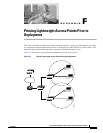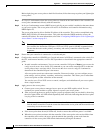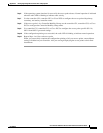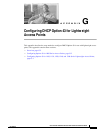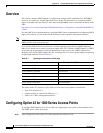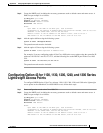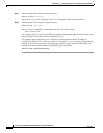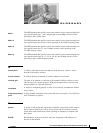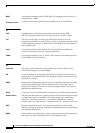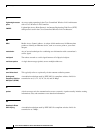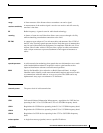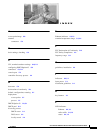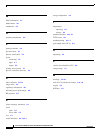
GL-1
Cisco Aironet 1200 Series Access Point Hardware Installation Guide
OL-8370-04
GLOSSARY
802.11
The IEEE standard that specifies carrier sense media access control and physical
layer specifications for 1- and 2-megabit-per-second (Mbps) wireless LANs
operating in the 2.4-GHz band.
802.11a
The IEEE standard that specifies carrier sense media access control and physical
layer specifications for wireless LANs operating in the 5-GHz frequency band.
802.11b
The IEEE standard that specifies carrier sense media access control and physical
layer specifications for 5.5- and 11-Mbps wireless LANs operating in the
2.4-GHz frequency band.
802.11g
The IEEE standard that specifies carrier sense media access control and physical
layer specifications for 6, 9, 12, 18, 24, 36, 48, and 54 Mbps wireless LANs
operating in the 2.4-GHz frequency band.
A
access point
A wireless LAN data transceiver that uses radio waves to connect a wired
network with wireless stations.
ad hoc network
A wireless network composed of stations without Access Points.
antenna gain
The gain of an antenna is a measure of the antenna’s ability to direct or focus
radio energy over a region of space. High gain antennas have a more focused
radiation pattern in a specific direction.
associated
A station is configured properly to allow it to wirelessly communicate with an
Access Point.
Autonomous access
point
A fully featured standalone access point that does not require a Cisco Wireless
LAN Controller to operate.
B
beacon
A wireless LAN packet that signals the availability and presence of the wireless
device. Beacon packets are sent by access points and base stations; however,
client radio cards send beacons when operating in computer to computer (Ad
Hoc) mode.
BOOTP
Boot Protocol. A protocol used for the static assignment of IP addresses to
devices on the network.



